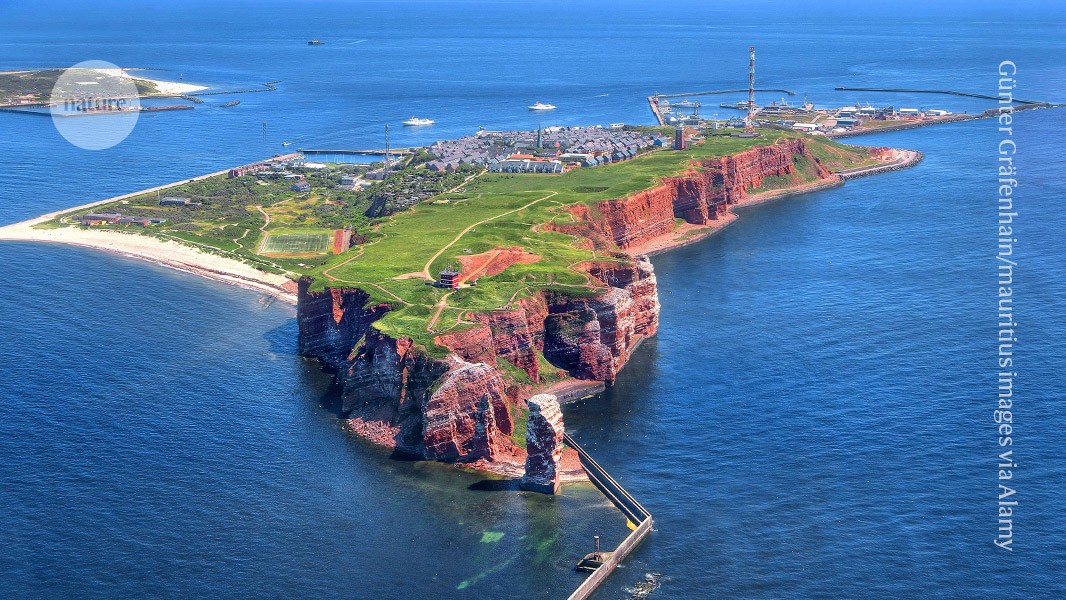Happy birthday quantum mechanics! I got a ticket to the ultimate physics party

Nature reporter joins hundreds of physicists on a remote island to celebrate Heisenberg’s enlightening trip there 100 years ago
As the ferry pulled into the dock at the North Sea island of Heligoland, I wondered: did German wunderkind Werner Heisenberg — who famously formulated the mathematics behind quantum physics here in 1925 — also arrive wanting to throw up?
The choppy four-hour journey from Hamburg was unpleasant, but perhaps a small price to pay for an invite to the physics event of the year. I am one of some 300 people, including at least four Nobel laureates, who have descended on the remote island (population 1,253) for a conference dubbed by one of its organisers as the birthday party of quantum mechanics.
Legend has it that 100 years ago this week, 23-year-old Heisenberg came to the island to escape his debilitating hay fever (some sources say the island hosted just one tree – I can report that I have seen at least four). Unable to sleep, he is said to have sketched out his ideas late into the night before reaching an epiphany. He then roamed the island, shaken, before watching the sunrise from the top of a rock.
Heisenberg’s insight was that electrons around an atom — whose orbits had puzzled physicists with conflicting predictions and measurements — should be defined by only observables; their leaps and transitions, instead of trajectories. This required developing a specific kind of mathematics called matrix mechanics that helped to shepherd in a new, quantum, era in physics.
Retracing Heisenberg’s steps
The young physicist’s revelation on this remote island is a beautiful and somewhat mythical image. As highlighted by science writer Philip Ball at the conference dinner, Heisenberg himself was unsure of the magnitude of what he had done, writing to his father on his return that “my own work is not going at the moment especially well”. It was only once built upon by his collaborators Max Born and Pascual Jordan, that Heisenberg’s work became a complete formulation of mechanics.
But people who want a birthday party need to pick a date. And now that I am here I can see that Heligoland’s stark red cliffs and stiff breeze makes it a perfect place to roam, contemplate and hope that some of Heisenberg’s genius rubs off.

A memorial stone on the island honours Heisenberg and his achievements.Credit: Elizabeth Gibney for Nature
Down every street and in every café sit physicists, their conference lanyards swinging, huddled in conversation. My server asks me what we’re all doing here. “Quantum physics!” I say with glee. A local man who studies wildlife at the Biological Institute Heligoland told me he could spot fellow scientists among the islanders.
To encourage conversation and revelation, the conference schedule is bizarre. After the morning session talks adjourn until til 7pm, to give ample time to explore the tiny island. Heligoland’s fame goes well beyond quantum mechanics. Over the centuries the island has swapped between British, Danish and German rule, and it is a haven for seals and rare seabirds. In 1947 it was half obliterated by the largest non-nuclear explosion in history, when the British Royal Navy blew it up to prevent it being used as a German military base.
Enjoying our latest content?
Login or create an account to continue
- Access the most recent journalism from Nature's award-winning team
- Explore the latest features & opinion covering groundbreaking research
or
Sign in or create an accountdoi: https://doi.org/10.1038/d41586-025-01860-z
This story originally appeared on: Nature - Author:Elizabeth Gibney


















